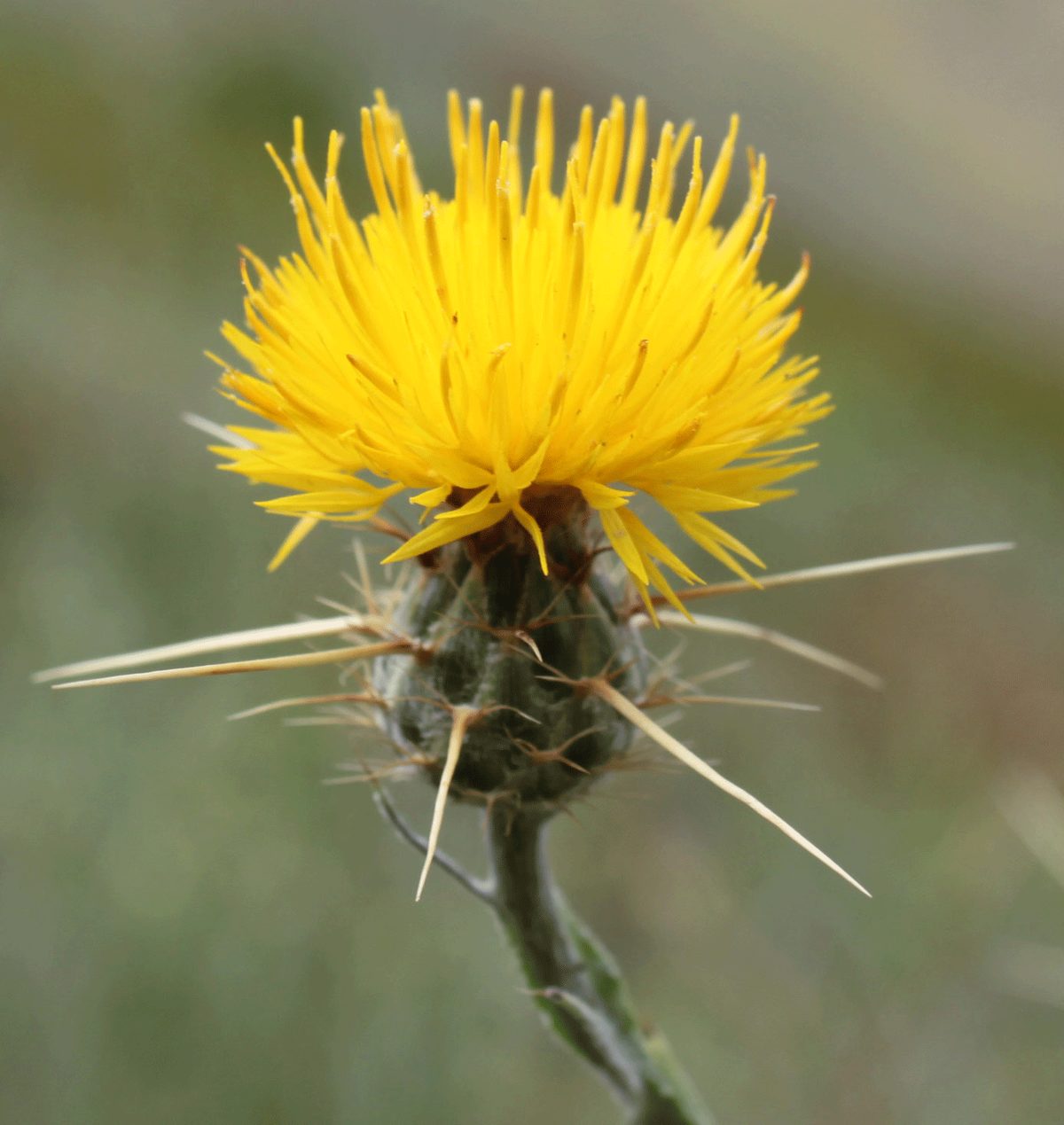In pastures, roadsides, oak woodlands, meadows and over buried pipelines and under power lines, the spiky yellow flowers and frosty vegetation of nonnative invasive yellow starthistle (Centaurea solstitialis) is a familiar sight in the Rogue Basin. This noxious weed is native to the Mediterranean and was first introduced to the region around the time of the California Goldrush in the 1850s through contaminated forage brought from Chile. Why should you care? Honey bees like it, right? Love horses? Yellow thistle is poisonous to horses and can be fatal.
Proud of our natural heritage of rare and uncommon native plants, some of which grow nowhere else in the world, in the Klamath-Siskiyou Ecoregion? Enjoy the beauty of a meadow full of spring flowers? Starthistle is a monoculture specialist and is especially effective at taking over oak woodlands and meadows. It extinguishes biodiversity.
Fond of pollinators? Honey bees and native pollinators require a diverse menu of pollen and nectar from many flowering species from spring through fall. A monoculture of starthistle only provides resources for a brief time. A field of summer-dried starthistle stalks has no value for bees or butterflies.
Want to sell your hay? Hay contaminated with starthistle harms horses and helps spread starthistle to new locations and decreases the value of your product.
Want to tiptoe or stroll through a meadow? Walking through a field of dry and pokey starthistle is unpleasant and can be barrier to the movement of wildlife. Dry starthistle stalks can also increase wildfire hazard.
What to do? ?
Just pull it! Starthistle is an annual plant so target pulling plants before they go to seed. Prioritize removing small infestations, along corridors like roads and trails, and around buildings. There may be multiple generations at a site so monitor for new plants and pull. The seeds remain viable in the soil for around three years, so please pull plants every year until gone.
Going on a hike? Please pull for a good cause and stop for a few minutes and pull starthistle along roads and trails. The natural world gives you solace and fun, give back.
Stop the seeds! One starthistle plant can spread as many as 30,000 seeds per square meter, with up to 95 percent of the seed being viable. Remove vegetative and early flowering plants before the seeds develop.
When working with contractors, require the use of clean equipment and weed-free gravel fill. Roadwork and construction are some of the main culprits in spreading starthistle and other noxious weeds.
Other control options include careful mowing, prescribed burns, irrigation, and managed cattle, goat, or sheep grazing. For more info: https://www.oregon.gov/oda/shared/Documents/Publications/Weeds/YellowStarthistleProfile.pdf.
Written by Kristi Mergenthaler, Southern Oregon Land Trust

